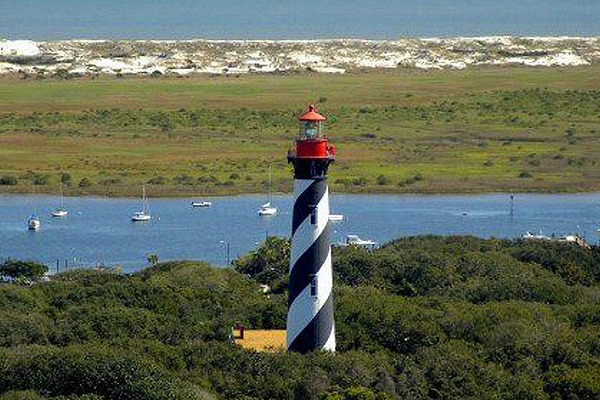- Home
- Florida History
- Florida Heritage Sites
- Randell Research Center at Pineland
RANDELL RESEARCH CENTER
AT PINELAND
By Mike Miller April 24, 2025
OVERVIEW
The Randell Research Center (RRC) at Pineland, Florida, is a premier archaeological and educational facility operated by the Florida Museum of Natural History.
Located on Pine Island’s western shore, this 67-acre site preserves the Pineland Site Complex, a major Calusa Indian village inhabited for over 1,500 years.
The RRC, established in 1996 through a land donation by Donald and Patricia Randell, offers visitors a chance to explore the Calusa Heritage Trail, a 0.7-mile interpretive walkway through ancient shell mounds and canals, blending archaeology, history, and ecology.
HISTORICAL SIGNIFICANCE
The Pineland Site Complex, listed on the National Register of Historic Places, was a thriving Calusa settlement from around 50 AD to 1710.
The Calusa, a powerful Native American tribe, dominated South Florida, sustaining tens of thousands through fishing and shellfish harvesting in Pine Island Sound’s rich estuaries.
They constructed massive shell mounds, some over 30 feet high, and engineered a 30-foot-wide canal across Pine Island, a feat noted by archaeologist Frank Cushing in 1895.
The site may have been the Calusa community of Tampa, visited by Spanish forces in 1612–1614, possibly even attacked during a retaliatory campaign.
Archaeological work, funded by the Randells and intensified in the 1980s, uncovered waterlogged deposits preserving rare botanical remains, shedding light on Calusa life and global climate changes.
VISITING DETAILS
Located at 13810 Waterfront Dr, Pineland, FL 33945, the Randell Research Center is accessible via Pine Island Road (Hwy 78) and Pineland Road.
The Calusa Heritage Trail is open daily, sunrise to sunset, for self-guided visits, with requested donations of $7 for adults, $5 for seniors, and $4 for children.
The gift shop and classroom operate Monday–Saturday, 10 AM–4 PM (November–Memorial Day) or Tuesday–Saturday, 10 AM–2 PM (Memorial Day–October), weather permitting. Call 239-283-2157 for private tours.
Visitors should wear sun protection and bug spray, as the trail is exposed. Note: The trail may close for hurricane recovery, so check the RRC website.
INTERESTING FACTS
- The site’s wetland artifacts, unique in North America, include ancient botanical remains informing global sea-level studies.
- The Ruby Gill House, a 1920s structure, serves as RRC headquarters.
- A 2004 visit by former President Jimmy Carter followed Hurricane Charley’s devastation.
- The Calusa’s canal, dug with shell tools, saved time navigating Pine Island’s choppy waters, showcasing their ingenuity.
- Osprey nests and native plants enhance the trail’s ecological allure.
RANDELL RESEARCH CENTER AT PINELAND WEBSITE
LOCATION MAP
Our Facebook page has more than 130,800 followers who love off the beaten path Florida: towns, tourist attractions, maps, lodging, food, festivals, scenic road trips, day trips, history, culture, nostalgia, and more.
By Mike Miller, Copyright 2009-2025
Florida-Back-Roads-Travel.com
Florida Back Roads Travel is not affiliated with or endorsed by Backroads, a California-based tour operator which arranges and conducts travel programs throughout the world.
